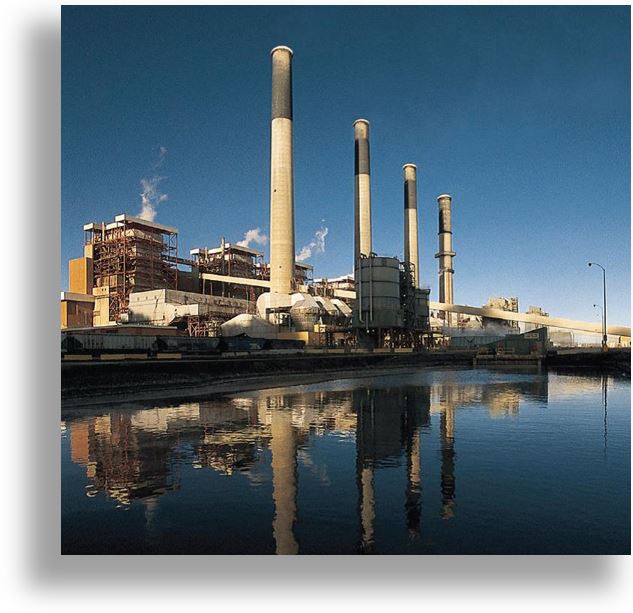Coal-fired generation has been a primary source of commercial power production in the United States for many decades. Coal plants provide a portion of electricity used in Idaho. However, these plants are located in neighboring states. Idaho Power Company partially owns 1,118 MW of coal-fired generation capacity in Wyoming, Nevada, and Oregon. Avista Corporation owns 222 MW of coal-fired capacity located in Eastern Montana, and PacifiCorp owns 5,638 MW of coal-fired capacity. All of these plants use coal pulverized to a dust-like consistency that is burned to heat water producing steam to drive thhttps://www.myavista.com/e turbine and generator.
While coal power plants require significant capital expenditures, they provide reliable baseload electricity. Air quality and other environmental concerns have recently driven regulations that are aimed at reducing emissions and particulates. Coal-fired plants emit more carbon dioxide per kilowatt-hour (kWh) produced than natural gas-fired plants. Subsequently, some Idaho utilities are working toward exiting participation in their coal power plants interests.

Carbon capture, utilization and sequestration (CCUS) is an approach to mitigate climate change by capturing carbon dioxide from large point sources such as power plants and storing it instead of releasing it into the atmosphere. According to the World Coal Association, CCUS is expected to be able to capture 90 percent of carbon dioxide emissions from power plants and industrial facilities. Once captured and transported, carbon dioxide can be permanently stored, used for enhanced oil recovery or as a value-added commodity. For example, carbon dioxide can be used as a feedstock for algae farming, and then the harvested algae can be processed into biofuel. Other examples of using carbon dioxide as a value-added commodity include using the product for curing concrete (which also acts as small-scale storage) and using the product to produce ethanol for the chemical, pharmaceutical and cosmetic industries.
Technology for sequestration is commercially available and is used at many locations across the nation at a modest scale, primarily for oil and gas recovery. However, technology needed for capturing carbon dioxide from large point sources, such as from large power producers or industrial manufacturers, has yet to be developed. Although carbon dioxide has been injected into geological formations for various purposes (such as enhanced oil recovery), long-term storage on a large scale has yet to be demonstrated. To date, no large-scale power plant operates with a full carbon capture and storage system in the U.S.
With the implementation of 45Q tax credits and Department of Energy programming focused on scaling this technology, the United State has seen renewed interest in CCUS project proposals in recent years. Additional insights from the International Panel on Climate Change (IPCC) indicating the importance of CCUS going forward have ignited global interest and scalability for the technology.
Resources:
Avista serves more than 231,000 electric customers in northern Idaho, Washington and Oregon, and is the second largest electricity provider in Idaho. Avista has partial ownership of the Colstrip plant, located in eastern Montana, which consists of four coal-fired steam plants connected to a double-circuit 500 kV BPA transmission line under a long-term wheeling agreement. Talen Energy Corporation operates the facilities on behalf of the six owners. Avista has no ownership interest in Units 1 or 2, but owns 15 percent of Units 3 and 4. Unit 3 began operating in 1984 and Unit 4 was finished in 1986. The Avista share of Colstrip has a maximum net capacity of 222.0 MW, and a nameplate rating of 247.0 MW. Avista is planning to exit ownership in Units 3 and 4 of Colstrip by 2025.
Visit https://www.myavista.com/ for more information on Avista.
Idaho Power Company serves over 610,000 customers across a 24,000 square mile service area in southern Idaho and eastern Oregon. Headquartered in Boise, Idaho Power Company is the largest provider of electricity in the state. Idaho Power shares ownership of three coal-fired power plants, all located outside of Idaho. Idaho Power owns 33% (704 MW) of the Jim Bridger Plant in Wyoming, 50% (260 MW) of the North Valmy Plant in Nevada, and 10% (57.5 MW) of the Boardman Plant in Oregon.
Idaho Power is exploring options to reduce emission from the Jim Bridger Plant, including early retirement for two of the Jim Bridger units. Idaho Power ended its participation in North Valmy unit 1 in 2019 and has an agreement to exit unit 2 by 2025. The Boardman plant is scheduled to cease coal-fired operations in 2020.
Visit www.Idahopower.com for more information on Idaho Power.
Rocky Mountain Power, a division of PacifiCorp, serves over 85,000 retail customers in eastern Idaho. PacifiCorp has ownership in 24 Units of coal-fired facilities, providing over 60% (5,638 MW) of PacifiCorp’s energy mix. These plants are located in Arizona, Colorado, Montana, Utah, and Wyoming.
PacifiCorp’s preferred portfolio includes retirement of 16 of the 24 Units by 2030.
Visit https://www.rockymountainpower.net/ for more information on Rocky Mountain Power.
 Official Government Website
Official Government Website